- Home
- James Patterson
Private India Page 11
Private India Read online
Page 11
“Rupesh is on Munna’s payroll?” asked Santosh.
“Can’t be sure, but they have met a few times,” said the young man slyly, accepting a packet of cash from Santosh. “Munna met with a man who is known to be a member of the Indian Mujahideen. My boys told me that Munna told him to fuck off … almost threw him out of his car.”
Why would an Indian Mujahideen member wish to meet Munna? wondered Santosh as he continued strolling along the beach with his amputee associate.
Chapter 43
I ALLOW THE water to run. It fills the old tub noisily. The sound of splashing reverberates through the room. I shut off the faucet once the water reaches the brim and kneel down in front of the tub, placing my hands on its edge. I lean forward and allow my face to touch the water. I allow my head to be immersed entirely. I leave my eyes open so that I can see beneath the surface and feel the sensation. Baptism!
The truth is that human lungs were never designed to squeeze oxygen from water. But for someone struggling below the surface, it is an instinctive reaction to draw water into the larynx. The irony, of course, is that the water intake only serves to cut off the supply of life-giving oxygen, thus resulting in death. Birth, death, and rebirth … baptism!
I hold my breath to prevent the water from hitting my lungs and force myself to stay immersed. There is no struggle, no panic. I am fully conscious and entirely in control. I count the seconds quietly in my head. These days I can count to two hundred and fifty without passing out. I pull my head out of the water and suck in air gratefully.
One only realizes the value of air when one is deprived of it and one only begins to value life in the face of death.
I actually feel sorry for Jack Morgan. So many raging hormones within … desperately yearning for union with the warm, inviting body of dear Lara, only to be served up her cold corpse instead. Deprivation yet again. What a tragic turn of events!
I look up at my wall. The front-page story is fixed on it with sticky tape. I am in the limelight now … that gift to the editor did the trick. Someday I will be even more celebrated and they will worship me like a deity. My mother always predicted that I would be famous.
One day a neighborhood child snatched my toy. My mother held me to her chest and calmed me down. She then made me look into her mirror. “Do you see your face?” she asked. “It’s so very beautiful. It will take you places.”
But those moments were few and far between.
Yes, Mother, I am famous now. Just like you predicted. I am living my dream … or is it your nightmare?
Chapter 44
THE MOOD AT Private India was somber. The senior team had assembled in the conference room at Jack’s request.
“First of all, I must clarify the fact that I knew Lara from her days in LA,” he began. “My initial contact with her was on a case, but once the assignment was over we ended up becoming friends and soon we were romantically involved. There was absolutely nothing I wouldn’t do to protect Lara.”
“Jack, you are embarrassing us. Not a single person in this room believes that you are a suspect,” said Santosh, absentmindedly playing with his walking cane. “The suspicion is only in Rupesh’s mind.”
“The news from the grapevine,” began Nisha, “is that Rupesh’s boss—the Mumbai Police Commissioner—put pressure on him to hand over the investigation to Private India initially even though Rupesh personally was against it.”
“That seems strange,” said Santosh. “Rupesh called the Commissioner while I waited. It was he who sought permission for us to take the lead.”
“Rupesh wanted to retain control of the investigation,” said Nisha. “It was the Commissioner who was keen to pass it on to Private India.”
“Even so, how does that make a difference?” asked Jack.
“Well,” replied Nisha, “the Commissioner has now been kicked upstairs and will soon be taking over as Director General of Police—a nonjob if ever there was one! Rupesh was simply waiting for an opportunity to snatch the case from us. With the Commissioner going, your presence in Lara’s van on the day of her murder was the perfect excuse for him to act.”
“Be that as it may,” said Jack, “this case is no longer just another investigation for Private India. This is now personal. I have lost one of my dearest friends and we are not going to give up on finding the perpetrator, irrespective of whether we’re officially on the case or not.”
“Rupesh wants us to submit all our findings and reports to him in the next few hours,” Nisha reminded them.
“And so we shall,” interjected Santosh. “Give him whatever he wants, but make sure that you have copies and backups of everything so that our own investigation can continue—with or without Rupesh’s blessing.”
“What about the evidence collected from Principal Elina Xavier’s murder scene?” asked Mubeen.
“Expedite your analysis so that you can return the physical evidence to Rupesh. As usual, retain copies of your findings,” replied Santosh, nudging Jack to get up.
He wanted their boss to return to his hotel and get some rest. Jack was staying at the Taj Mahal Hotel and Santosh’s apartment was close by, less than a ten-minute walk from the Private India office in Colaba.
The streets wore a festive look because most of Mumbai was celebrating Navratri—the Festival of Nine Nights—an extravaganza to honor the power of the Hindu mother goddess Durga. All along their route, small kiosks and makeshift temples had been erected and were decked out with flowers and bright electric lights.
“C’mon, I’ll show you what Navratri celebration is all about before I drop you off at the hotel,” said Santosh, grasping Jack’s elbow to steer him into some open ground. Hundreds of young men and women had gathered there to dance the Dandiya—a form of dancing traditionally performed during the festival. Jack noticed that the men and women, each holding two short sticks in their hands, were dancing in concentric circles. On every fourth beat the sticks would clash together in order to complement the music in the background.
In one corner of the ground a huge canopy had been constructed, under which sat a massive statue of Durga. Around the statue hundreds of worshipers sang devotional songs, danced, lit earthen lamps or incense, offered flowers, and recited prayers. The expression on Durga’s face was angry. Jack was curious despite his dazed and drained condition after Lara’s death.
“Durga, despite the terrifying imagery with which she is depicted, is not a malevolent deity,” explained Santosh patiently. “For the ancient Hindu seers she was simply the goddess of time and transformation, who could help one understand the cycle of creation, life, death, and rebirth. To the uneducated, however, she was something entirely different. The Durga of medieval times was thirsty for human blood and could only be satisfied through human or animal sacrifice.”
Santosh continued to explain the characteristics of Durga to Jack as he stood transfixed before the large statue. At that moment Santosh saw something that he had been missing all along. It sent shivers down his spine.
Chapter 45
“WHAT’S THE MATTER, Santosh?” asked Jack, realizing suddenly that they had been standing in front of the statue for a long time. Santosh seemed to be staring fixedly at the idol’s hands.
His heart was beating wildly as he grabbed Jack’s arm like a man possessed, hurried out of the celebration grounds and hailed a cab—wildly waving it down with his walking stick. He was still waving it inside the cab, urging the driver to get a move on.
“I thought you wanted to walk,” began Jack, but Santosh ignored his boss.
“Take us to the Town Hall, and there’s an extra fifty in it for you if we’re there within five minutes … five minutes!” he instructed the cabbie. He then took out his cell phone and dialed Nisha, barking instructions. Jack was left wondering if there was some truth in the rumors that he had appointed a lunatic as his Indian bureau chief.
With its vintage parquet floors, grand spiral staircases, wrought-iron loggias, and exquisite marble
statues of forgotten city fathers, the white-colonnaded Town Hall was perhaps one of the most splendid and imposing of Mumbai’s heritage monuments. The cabbie dropped them off at the base of the stairs leading up to the magnificent building. Nisha arrived at the same time in another cab.
“Why have we come here?” she asked breathlessly, having run part of the way due to the urgency of Santosh’s summons.
“It’s not the Town Hall that we’re interested in,” he said as they began walking up the stairs. “This particular building also houses the Asiatic Society, which has a collection of close to one million books, some of them priceless antiques. We should easily find the one that I need.”
The Asiatic Library had separate sections housing different treasures. An impressive numismatic collection of over a thousand ancient coins including a rare gold mohur belonging to the most famous Mughal emperor—Akbar—was also housed in the building. Of course, the collection was not open to public view but the library was accessible to all. Santosh ignored the direction signs and headed for the reading room, the fading grandeur of which attracted many senior citizens who sat under the ancient ceiling fans poring over local newspapers.
“What are we looking for?” asked Nisha, as they entered the library and headed toward the central desk.
“Tell the chief librarian that we need a book by M. D. Jayant and Naveen Gupta,” replied Santosh. “I can’t remember the title but it’s an illustrated book that explains the nine avatars of Durga.” Nisha returned a couple of minutes later with a slip of paper on which the librarian had written the rack number where the book could be found.
Having located The Nine Durga Avatars of Hinduism, they sat down at an illuminated desk. Nisha began to read aloud the relevant passages to both men as softly as she could.
“The mother goddess—Durga—has three basic forms and each of these has three manifestations thus resulting in a total of nine avatars. Each night of the nine-day festival of Navratri is dedicated to one of the nine avatars—”
“Yes, yes, I know that,” said Santosh impatiently. “I want to know what each avatar looks like.”
Nisha quickly leafed through the book and found the chapter that described the first avatar of Durga. She was known by the name Shailputri. Turning the pages further, they saw an illustration showing what Shailputri looked like. There was a moment of hushed awe when they saw the image of the avatar holding a trident in one hand and a lotus flower in the other.
“Look at that,” said Santosh, pointing to the mount of the goddess. Nisha and Jack looked at the picture more closely. Santosh was spot on. Shailputri was shown mounted and seated on a bull. The first victim at the Marine Bay Plaza. Nisha felt her heart racing as the theory that Santosh was proposing dawned upon her.
Chapter 46
“THERE IS ONLY one way to find out if my instincts are correct,” said Santosh. “Let’s check out each of the nine avatars of Durga. Each one!”
Nisha quickly flipped the page and found that the second avatar was called Brahamcharini. She was pictured with one hand holding a water pot, and another holding a rosary.
“This ties in perfectly with the murder of Bhavna Choksi,” said Nisha excitedly.
“Let’s go further,” instructed Jack, realizing that Santosh’s insight might possibly have cracked the case wide open.
Nisha browsed the pages to find the third avatar, Chandraghanta. This avatar of Durga was shown riding a tiger. She was holding a bell and had a semicircular moon painted on her forehead.
“Priyanka Talati,” whispered Nisha to Jack.
“Actually, it turns out I was right in another little observation too,” said Santosh.
“In what way?” asked Nisha.
“The name Chandraghanta is a combination of two words—chandra and ghanta,” he replied. “The first means moon and the second bell. The murder of Priyanka happened on a Monday—the day of the moon. The night of the murder as per the almanac was a half-moon night. The half-moon is also a symbolic representation of a bell.”
Jack took the book from Nisha and turned the pages to check the fourth form of Durga. The avatar was called Kushmanda. Below the image in the book was a brief explanation.
“The name Kushmanda is derived from two separate Sanskrit words,” Jack read out, “kushma, which means warmth; and anda, which refers to the cosmic egg. So Kushmanda is considered to be the creator of the egg-shaped universe.”
“Elina Xavier was left on her bed with a dozen eggs placed in an oval pattern around her,” Nisha confirmed.
“There was something else about that murder scene,” said Santosh. “The temperature in the room had been set as high as possible, remember? Which ties in with the association with warmth.”
Jack hurriedly turned the page to the fifth form of Durga. Her name was Skandamata. She was depicted as holding her son—an infant—on her lap.
“Lara …” Jack sighed, slumping in his seat.
“What are the remaining forms of Durga?” asked Santosh. “After all, we know that she has nine forms, right?”
Nisha took the book back from Jack and hastily turned the pages to find the next avatar. “Here she is.” Nisha was pointing to an illustration of a goddess mounted on a lion. “Apparently this form is known as Katyayani.”
She flipped over the pages and showed Jack and Santosh the next image—Kaalratri—a terrifying form of Durga. With a bluish-black complexion, long and disheveled hair, and seated on a donkey, this form was shown holding a bunch of thorns in her hand.
The eighth avatar was Mahagauri, depicted with a fair complexion and holding a drum. Finally, the ninth incarnation—known as Siddhidatri—was shown with four arms holding a discus, a mace, a conch, and a lotus.
“Four forms still left. It means that we should expect four more murders,” said Santosh grimly.
Chapter 47
“IF WE KNOW that the murderer is killing according to the nine incarnations of Durga, can’t we use this information to warn people?” asked Nisha.
“How?” replied Santosh. “Knowing what the symbols mean tells us absolutely nothing about how the killer is choosing his victims. Nothing! For all we know, the bastard could be standing in a supermarket or on a street corner, randomly choosing targets.”
“So what deductions can we make from what we know?” asked Jack.
“Well, one thing is certain,” said Santosh. “Given that all the victims are depicted as incarnations of the goddess Durga, we can be fairly certain that all the future targets will also be women.”
“All five previous killings have been in Mumbai, which means that the city constitutes a comfort zone for the killer,” added Jack.
“There’s something in the thuggee story that is also relevant to our investigation,” said Santosh. “For most of the cult members, killing was a religious duty. They often saw their murders as a means of worship. Almost the equivalent of human sacrifice.”
“Why the yellow scarf?” asked Nisha. “What does that have to do with Durga?”
“I think I know the answer to that one,” replied Santosh. “I remember my grandmother recounting to me a legend in which Durga once fought a ferocious demon. Unfortunately, each drop of the monster’s blood would spawn yet another monster. Durga finally created two men, each armed with yellow scarves, and ordered them to strangle the demons—in effect killing the monsters without allowing them to multiply. I assume that the thuggee tradition of yellow scarves has its genesis in that story.”
He took a deep breath as he tried to clear his head. “We know that at the first three murder sites the security apparatus belonged to Xilon. There was no CCTV system at the girls’ school or in Lara’s van. What have we found out about Xilon?” he asked Nisha.
“The company was created by a retired armed forces man—squeaky-clean track record. The reason that Xilon was at all three initial murder sites was because they have a monopoly of sorts … they control around two-thirds of the security business in Mumbai.”
> “What about the company’s employees?” asked Santosh.
“I am still looking into individual employee records,” said Nisha. “Two of the senior engineers are on leave and one hasn’t reported in for a couple of days.”
“Find out about the missing employee,” said Santosh, his antennae picking up on a possible angle.
“Sure, I’ll get on it first thing tomorrow.”
The library was almost empty at this hour. Most of the senior citizens who had been perusing newspapers and magazines in the public reading room had left. Any sound made within the imposing space was amplified by its high ceilings and marble pillars. Santosh’s excitement caused his voice to rise and echo. In the center of the generously proportioned room the old librarian sat in his wooden chair, dozing off intermittently, absorbing snatches of conversation emanating from the table occupied by the Private India team.
They fell silent as Jack and Nisha stared across the table at Santosh, who seemed to be lost in thought, his lips moving as his mind chewed over the latest developments.
As they waited for the great detective’s next pronouncement they cast amused glances at each other. Nisha, aware of Jack’s hugely magnetic charm, felt herself redden all of a sudden, and was grateful when Santosh looked up from the book at them, his eyes shining with excitement.
“He’s not being worshipful to Durga,” he told them. “The trinkets he attaches to them, they’re not respectful tokens, they’re silly toys. A Viking helmet, for God’s sakes. This is not some kind of veneration, it’s a desecration. Why? Because our man hates women. He’s not just killing women, he’s killing womankind.”
Chapter 48
THE SEA OF humanity dressed in white was overwhelming. It was high noon and the weather was hot and muggy but that had not deterred over a hundred thousand devotees from gathering in open ground on the outskirts of Mumbai. A roar of approval erupted from the crowd as Nimboo Baba pressed his palms together and greeted his followers with the traditional Indian greeting, “Namaste.”

 Miracle at Augusta
Miracle at Augusta The Store
The Store The Midnight Club
The Midnight Club The Witnesses
The Witnesses The 9th Judgment
The 9th Judgment Against Medical Advice
Against Medical Advice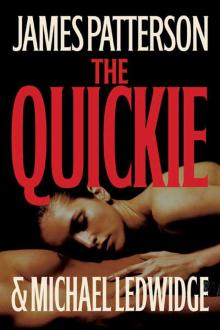 The Quickie
The Quickie Little Black Dress
Little Black Dress Private Oz
Private Oz Homeroom Diaries
Homeroom Diaries Gone
Gone Lifeguard
Lifeguard Kill Me if You Can
Kill Me if You Can Bullseye
Bullseye Confessions of a Murder Suspect
Confessions of a Murder Suspect Black Friday
Black Friday Manhunt
Manhunt Filthy Rich
Filthy Rich Step on a Crack
Step on a Crack Private
Private Private India
Private India Game Over
Game Over Private Sydney
Private Sydney The Murder House
The Murder House Mistress
Mistress I, Michael Bennett
I, Michael Bennett The Gift
The Gift The Postcard Killers
The Postcard Killers The Shut-In
The Shut-In The House Husband
The House Husband The Lost
The Lost I, Alex Cross
I, Alex Cross Going Bush
Going Bush 16th Seduction
16th Seduction The Jester
The Jester Along Came a Spider
Along Came a Spider The Lake House
The Lake House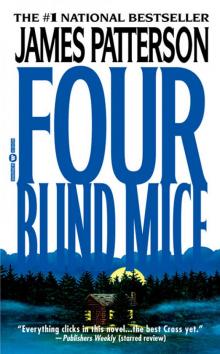 Four Blind Mice
Four Blind Mice Tick Tock
Tick Tock Private L.A.
Private L.A. Middle School, the Worst Years of My Life
Middle School, the Worst Years of My Life Cross Country
Cross Country The Final Warning
The Final Warning Word of Mouse
Word of Mouse Come and Get Us
Come and Get Us Sail
Sail I Funny TV: A Middle School Story
I Funny TV: A Middle School Story Private London
Private London Save Rafe!
Save Rafe! Swimsuit
Swimsuit Sam's Letters to Jennifer
Sam's Letters to Jennifer 3rd Degree
3rd Degree Double Cross
Double Cross Judge & Jury
Judge & Jury Kiss the Girls
Kiss the Girls Second Honeymoon
Second Honeymoon Guilty Wives
Guilty Wives 1st to Die
1st to Die NYPD Red 4
NYPD Red 4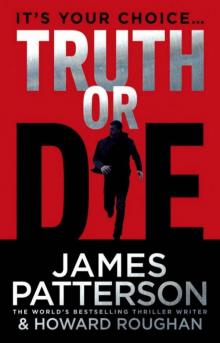 Truth or Die
Truth or Die Private Vegas
Private Vegas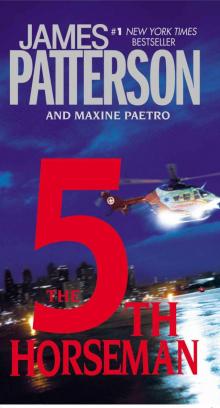 The 5th Horseman
The 5th Horseman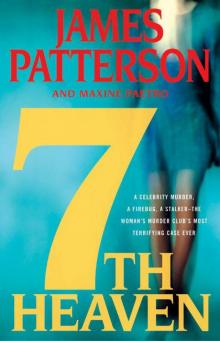 7th Heaven
7th Heaven I Even Funnier
I Even Funnier Cross My Heart
Cross My Heart Let’s Play Make-Believe
Let’s Play Make-Believe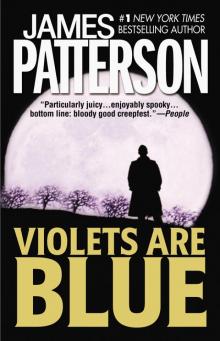 Violets Are Blue
Violets Are Blue Zoo
Zoo Home Sweet Murder
Home Sweet Murder The Private School Murders
The Private School Murders Alex Cross, Run
Alex Cross, Run Hunted: BookShots
Hunted: BookShots The Fire
The Fire Chase
Chase 14th Deadly Sin
14th Deadly Sin Bloody Valentine
Bloody Valentine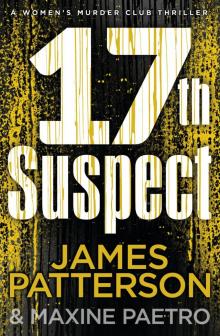 The 17th Suspect
The 17th Suspect The 8th Confession
The 8th Confession 4th of July
4th of July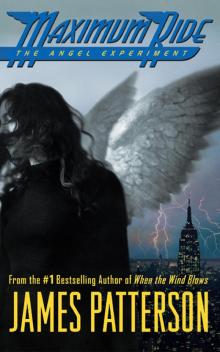 The Angel Experiment
The Angel Experiment Crazy House
Crazy House School's Out - Forever
School's Out - Forever Suzanne's Diary for Nicholas
Suzanne's Diary for Nicholas Cross Justice
Cross Justice Maximum Ride Forever
Maximum Ride Forever The Thomas Berryman Number
The Thomas Berryman Number Honeymoon
Honeymoon The Medical Examiner
The Medical Examiner Killer Chef
Killer Chef Private Princess
Private Princess Private Games
Private Games Burn
Burn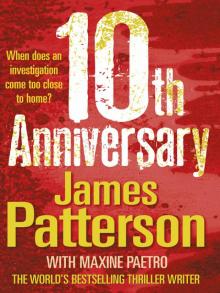 10th Anniversary
10th Anniversary I Totally Funniest: A Middle School Story
I Totally Funniest: A Middle School Story Taking the Titanic
Taking the Titanic The Lawyer Lifeguard
The Lawyer Lifeguard The 6th Target
The 6th Target Cross the Line
Cross the Line Alert
Alert Saving the World and Other Extreme Sports
Saving the World and Other Extreme Sports 1st Case
1st Case Unlucky 13
Unlucky 13 Haunted
Haunted Cross
Cross Lost
Lost 11th Hour
11th Hour Bookshots Thriller Omnibus
Bookshots Thriller Omnibus Target: Alex Cross
Target: Alex Cross Hope to Die
Hope to Die The Noise
The Noise Worst Case
Worst Case Dog's Best Friend
Dog's Best Friend Nevermore: The Final Maximum Ride Adventure
Nevermore: The Final Maximum Ride Adventure I Funny: A Middle School Story
I Funny: A Middle School Story NYPD Red
NYPD Red Till Murder Do Us Part
Till Murder Do Us Part Black & Blue
Black & Blue Fang
Fang Liar Liar
Liar Liar The Inn
The Inn Sundays at Tiffany's
Sundays at Tiffany's Middle School: Escape to Australia
Middle School: Escape to Australia Cat and Mouse
Cat and Mouse Instinct
Instinct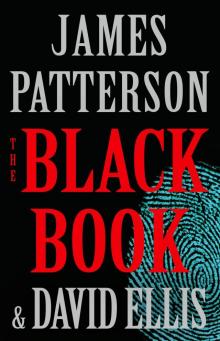 The Black Book
The Black Book London Bridges
London Bridges Toys
Toys The Last Days of John Lennon
The Last Days of John Lennon Roses Are Red
Roses Are Red Witch & Wizard
Witch & Wizard The Dolls
The Dolls The Christmas Wedding
The Christmas Wedding The River Murders
The River Murders The 18th Abduction
The 18th Abduction The 19th Christmas
The 19th Christmas Middle School: How I Got Lost in London
Middle School: How I Got Lost in London Just My Rotten Luck
Just My Rotten Luck Red Alert
Red Alert Walk in My Combat Boots
Walk in My Combat Boots Three Women Disappear
Three Women Disappear 21st Birthday
21st Birthday All-American Adventure
All-American Adventure Becoming Muhammad Ali
Becoming Muhammad Ali The Murder of an Angel
The Murder of an Angel The 13-Minute Murder
The 13-Minute Murder Rebels With a Cause
Rebels With a Cause The Trial
The Trial Run for Your Life
Run for Your Life The House Next Door
The House Next Door NYPD Red 2
NYPD Red 2 Ali Cross
Ali Cross The Big Bad Wolf
The Big Bad Wolf Middle School: My Brother Is a Big, Fat Liar
Middle School: My Brother Is a Big, Fat Liar Private Paris
Private Paris Miracle on the 17th Green
Miracle on the 17th Green The People vs. Alex Cross
The People vs. Alex Cross The Beach House
The Beach House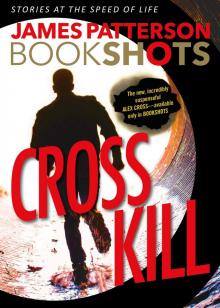 Cross Kill
Cross Kill Dog Diaries
Dog Diaries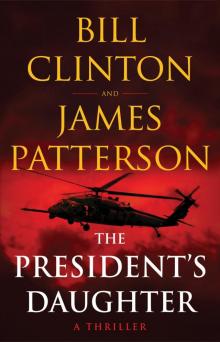 The President's Daughter
The President's Daughter Happy Howlidays
Happy Howlidays Detective Cross
Detective Cross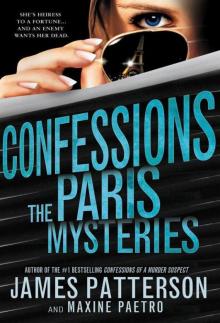 The Paris Mysteries
The Paris Mysteries Watch the Skies
Watch the Skies 113 Minutes
113 Minutes Alex Cross's Trial
Alex Cross's Trial NYPD Red 3
NYPD Red 3 Hush Hush
Hush Hush Now You See Her
Now You See Her Merry Christmas, Alex Cross
Merry Christmas, Alex Cross 2nd Chance
2nd Chance Private Royals
Private Royals Two From the Heart
Two From the Heart Max
Max I, Funny
I, Funny Blindside (Michael Bennett)
Blindside (Michael Bennett) Sophia, Princess Among Beasts
Sophia, Princess Among Beasts Armageddon
Armageddon Don't Blink
Don't Blink NYPD Red 6
NYPD Red 6 The First Lady
The First Lady Texas Outlaw
Texas Outlaw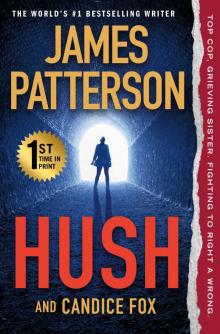 Hush
Hush Beach Road
Beach Road Private Berlin
Private Berlin The Family Lawyer
The Family Lawyer Jack & Jill
Jack & Jill The Midwife Murders
The Midwife Murders Middle School: Rafe's Aussie Adventure
Middle School: Rafe's Aussie Adventure The Murder of King Tut: The Plot to Kill the Child King
The Murder of King Tut: The Plot to Kill the Child King First Love
First Love The Dangerous Days of Daniel X
The Dangerous Days of Daniel X Hawk
Hawk Private Delhi
Private Delhi The 20th Victim
The 20th Victim The Shadow
The Shadow Katt vs. Dogg
Katt vs. Dogg The Palm Beach Murders
The Palm Beach Murders 2 Sisters Detective Agency
2 Sisters Detective Agency Humans, Bow Down
Humans, Bow Down You've Been Warned
You've Been Warned Cradle and All
Cradle and All 20th Victim: (Women’s Murder Club 20) (Women's Murder Club)
20th Victim: (Women’s Murder Club 20) (Women's Murder Club) Season of the Machete
Season of the Machete Woman of God
Woman of God Mary, Mary
Mary, Mary Blindside
Blindside Invisible
Invisible The Chef
The Chef Revenge
Revenge See How They Run
See How They Run Pop Goes the Weasel
Pop Goes the Weasel 15th Affair
15th Affair Middle School: Get Me Out of Here!
Middle School: Get Me Out of Here! Middle School: How I Survived Bullies, Broccoli, and Snake Hill
Middle School: How I Survived Bullies, Broccoli, and Snake Hill From Hero to Zero - Chris Tebbetts
From Hero to Zero - Chris Tebbetts G'day, America
G'day, America Max Einstein Saves the Future
Max Einstein Saves the Future The Cornwalls Are Gone
The Cornwalls Are Gone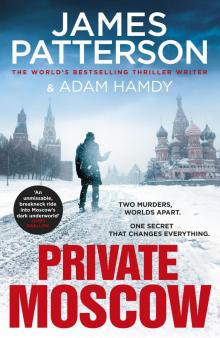 Private Moscow
Private Moscow Two Schools Out - Forever
Two Schools Out - Forever Hollywood 101
Hollywood 101 Deadly Cargo: BookShots
Deadly Cargo: BookShots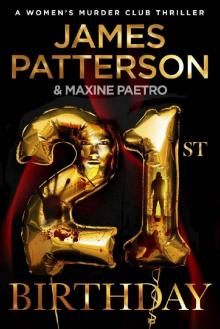 21st Birthday (Women's Murder Club)
21st Birthday (Women's Murder Club) The Sky Is Falling
The Sky Is Falling Cajun Justice
Cajun Justice Bennett 06 - Gone
Bennett 06 - Gone The House of Kennedy
The House of Kennedy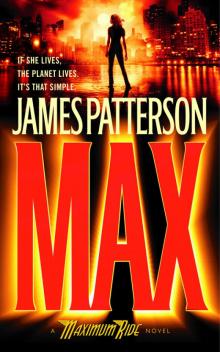 Waterwings
Waterwings Murder is Forever, Volume 2
Murder is Forever, Volume 2 Maximum Ride 02
Maximum Ride 02 Treasure Hunters--The Plunder Down Under
Treasure Hunters--The Plunder Down Under Private Royals: BookShots (A Private Thriller)
Private Royals: BookShots (A Private Thriller) After the End
After the End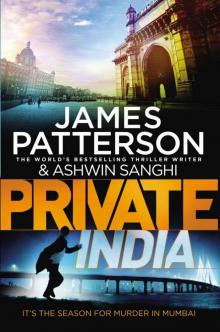 Private India: (Private 8)
Private India: (Private 8)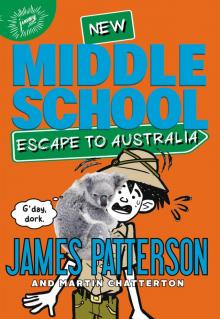 Escape to Australia
Escape to Australia WMC - First to Die
WMC - First to Die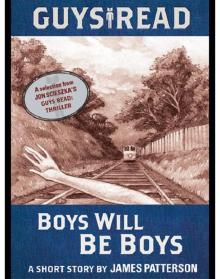 Boys Will Be Boys
Boys Will Be Boys The Red Book
The Red Book 11th hour wmc-11
11th hour wmc-11 Hidden
Hidden You've Been Warned--Again
You've Been Warned--Again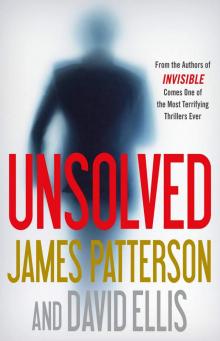 Unsolved
Unsolved Pottymouth and Stoopid
Pottymouth and Stoopid Hope to Die: (Alex Cross 22)
Hope to Die: (Alex Cross 22) The Moores Are Missing
The Moores Are Missing Black & Blue: BookShots (Detective Harriet Blue Series)
Black & Blue: BookShots (Detective Harriet Blue Series) Airport - Code Red: BookShots
Airport - Code Red: BookShots Kill or Be Killed
Kill or Be Killed School's Out--Forever
School's Out--Forever When the Wind Blows
When the Wind Blows Heist: BookShots
Heist: BookShots Murder of Innocence (Murder Is Forever)
Murder of Innocence (Murder Is Forever) Red Alert_An NYPD Red Mystery
Red Alert_An NYPD Red Mystery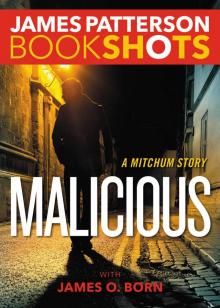 Malicious
Malicious Scott Free
Scott Free The Summer House
The Summer House French Kiss
French Kiss Treasure Hunters
Treasure Hunters Murder Is Forever, Volume 1
Murder Is Forever, Volume 1 Secret of the Forbidden City
Secret of the Forbidden City Cross the Line: (Alex Cross 24)
Cross the Line: (Alex Cross 24) Witch & Wizard: The Fire
Witch & Wizard: The Fire![Women's Murder Club [06] The 6th Target Read online](http://i1.bookreadfree.com/i/03/24/womens_murder_club_06_the_6th_target_preview.jpg) Women's Murder Club [06] The 6th Target
Women's Murder Club [06] The 6th Target Cross My Heart ac-21
Cross My Heart ac-21 Alex Cross’s Trial ак-15
Alex Cross’s Trial ак-15 Alex Cross 03 - Jack & Jill
Alex Cross 03 - Jack & Jill Liar Liar: (Harriet Blue 3) (Detective Harriet Blue Series)
Liar Liar: (Harriet Blue 3) (Detective Harriet Blue Series) Cross Country ак-14
Cross Country ак-14 Honeymoon h-1
Honeymoon h-1 Maximum Ride: The Angel Experiment
Maximum Ride: The Angel Experiment The Big Bad Wolf ак-9
The Big Bad Wolf ак-9 Dead Heat: BookShots (Book Shots)
Dead Heat: BookShots (Book Shots)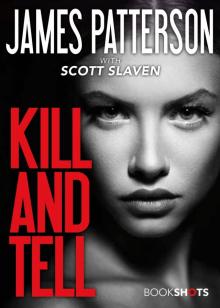 Kill and Tell
Kill and Tell Avalanche
Avalanche Robot Revolution
Robot Revolution Public School Superhero
Public School Superhero 12th of Never
12th of Never Max: A Maximum Ride Novel
Max: A Maximum Ride Novel All-American Murder
All-American Murder Murder Games
Murder Games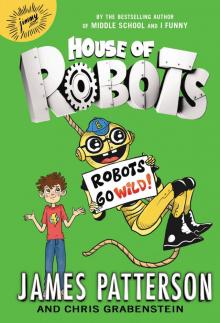 Robots Go Wild!
Robots Go Wild! My Life Is a Joke
My Life Is a Joke Private: Gold
Private: Gold Demons and Druids
Demons and Druids Jacky Ha-Ha
Jacky Ha-Ha Postcard killers
Postcard killers Princess: A Private Novel
Princess: A Private Novel Kill Alex Cross ac-18
Kill Alex Cross ac-18 12th of Never wmc-12
12th of Never wmc-12 The Murder of King Tut
The Murder of King Tut I Totally Funniest
I Totally Funniest Cross Fire ак-17
Cross Fire ак-17 Count to Ten
Count to Ten![Women's Murder Club [10] 10th Anniversary Read online](http://i1.bookreadfree.com/i1/03/30/womens_murder_club_10_10th_anniversary_preview.jpg) Women's Murder Club [10] 10th Anniversary
Women's Murder Club [10] 10th Anniversary![Women's Murder Club [01] 1st to Die Read online](http://i1.bookreadfree.com/i1/03/31/womens_murder_club_01_1st_to_die_preview.jpg) Women's Murder Club [01] 1st to Die
Women's Murder Club [01] 1st to Die I, Michael Bennett mb-5
I, Michael Bennett mb-5 Nooners
Nooners![Women's Murder Club [08] The 8th Confession Read online](http://i1.bookreadfree.com/i1/04/03/womens_murder_club_08_the_8th_confession_preview.jpg) Women's Murder Club [08] The 8th Confession
Women's Murder Club [08] The 8th Confession Private jm-1
Private jm-1 Treasure Hunters: Danger Down the Nile
Treasure Hunters: Danger Down the Nile Worst Case mb-3
Worst Case mb-3 Don’t Blink
Don’t Blink The Games
The Games The Medical Examiner: A Women's Murder Club Story
The Medical Examiner: A Women's Murder Club Story Black Market
Black Market Gone mb-6
Gone mb-6![Women's Murder Club [02] 2nd Chance Read online](http://i1.bookreadfree.com/i1/04/04/womens_murder_club_02_2nd_chance_preview.jpg) Women's Murder Club [02] 2nd Chance
Women's Murder Club [02] 2nd Chance French Twist
French Twist Kenny Wright
Kenny Wright Manhunt: A Michael Bennett Story
Manhunt: A Michael Bennett Story Cross Kill: An Alex Cross Story
Cross Kill: An Alex Cross Story Confessions of a Murder Suspect td-1
Confessions of a Murder Suspect td-1 Second Honeymoon h-2
Second Honeymoon h-2 Chase_A BookShot_A Michael Bennett Story
Chase_A BookShot_A Michael Bennett Story Confessions: The Paris Mysteries
Confessions: The Paris Mysteries![Women's Murder Club [09] The 9th Judgment Read online](http://i1.bookreadfree.com/i2/04/08/womens_murder_club_09_the_9th_judgment_preview.jpg) Women's Murder Club [09] The 9th Judgment
Women's Murder Club [09] The 9th Judgment Absolute Zero
Absolute Zero Nevermore: The Final Maximum Ride Adventure mr-8
Nevermore: The Final Maximum Ride Adventure mr-8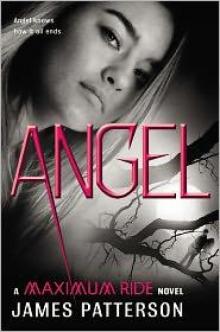 Angel: A Maximum Ride Novel mr-7
Angel: A Maximum Ride Novel mr-7 Juror #3
Juror #3 Million-Dollar Mess Down Under
Million-Dollar Mess Down Under The Verdict: BookShots (A Jon Roscoe Thriller)
The Verdict: BookShots (A Jon Roscoe Thriller)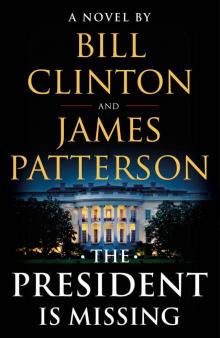 The President Is Missing: A Novel
The President Is Missing: A Novel![Women's Murder Club [04] 4th of July Read online](http://i1.bookreadfree.com/i2/04/06/womens_murder_club_04_4th_of_july_preview.jpg) Women's Murder Club [04] 4th of July
Women's Murder Club [04] 4th of July The Hostage: BookShots (Hotel Series)
The Hostage: BookShots (Hotel Series) $10,000,000 Marriage Proposal
$10,000,000 Marriage Proposal Diary of a Succubus
Diary of a Succubus Unbelievably Boring Bart
Unbelievably Boring Bart Angel: A Maximum Ride Novel
Angel: A Maximum Ride Novel Stingrays
Stingrays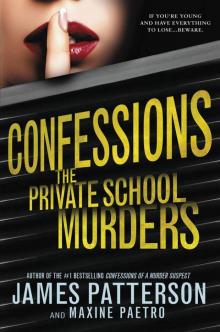 Confessions: The Private School Murders
Confessions: The Private School Murders Stealing Gulfstreams
Stealing Gulfstreams![Women's Murder Club [05] The 5th Horseman Read online](http://i1.bookreadfree.com/i2/04/05/womens_murder_club_05_the_5th_horseman_preview.jpg) Women's Murder Club [05] The 5th Horseman
Women's Murder Club [05] The 5th Horseman Zoo 2
Zoo 2 Jack Morgan 02 - Private London
Jack Morgan 02 - Private London Treasure Hunters--Quest for the City of Gold
Treasure Hunters--Quest for the City of Gold The Christmas Mystery
The Christmas Mystery Murder in Paradise
Murder in Paradise Kidnapped: BookShots (A Jon Roscoe Thriller)
Kidnapped: BookShots (A Jon Roscoe Thriller)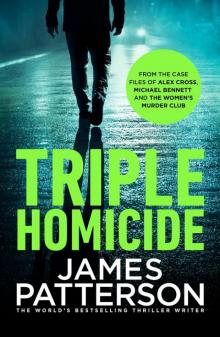 Triple Homicide_Thrillers
Triple Homicide_Thrillers 16th Seduction: (Women’s Murder Club 16) (Women's Murder Club)
16th Seduction: (Women’s Murder Club 16) (Women's Murder Club)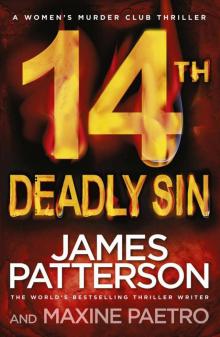 14th Deadly Sin: (Women’s Murder Club 14)
14th Deadly Sin: (Women’s Murder Club 14) Texas Ranger
Texas Ranger Witch & Wizard 04 - The Kiss
Witch & Wizard 04 - The Kiss![Women's Murder Club [03] 3rd Degree Read online](http://i1.bookreadfree.com/i2/04/12/womens_murder_club_03_3rd_degree_preview.jpg) Women's Murder Club [03] 3rd Degree
Women's Murder Club [03] 3rd Degree Break Point: BookShots
Break Point: BookShots Alex Cross 04 - Cat & Mouse
Alex Cross 04 - Cat & Mouse Maximum Ride
Maximum Ride Fifty Fifty: (Harriet Blue 2) (Detective Harriet Blue Series)
Fifty Fifty: (Harriet Blue 2) (Detective Harriet Blue Series) Alex Cross 02 - Kiss the Girls
Alex Cross 02 - Kiss the Girls The President Is Missing
The President Is Missing Hunted
Hunted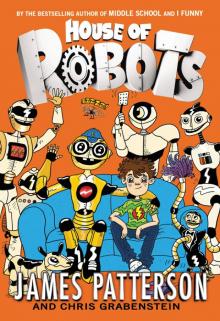 House of Robots
House of Robots Dangerous Days of Daniel X
Dangerous Days of Daniel X Tick Tock mb-4
Tick Tock mb-4 10th Anniversary wmc-10
10th Anniversary wmc-10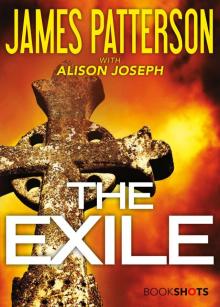 The Exile
The Exile Private Games-Jack Morgan 4 jm-4
Private Games-Jack Morgan 4 jm-4 Burn: (Michael Bennett 7)
Burn: (Michael Bennett 7) Laugh Out Loud
Laugh Out Loud The People vs. Alex Cross: (Alex Cross 25)
The People vs. Alex Cross: (Alex Cross 25)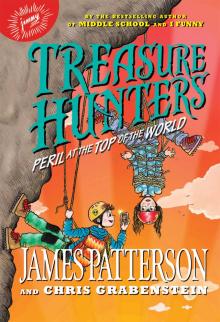 Peril at the Top of the World
Peril at the Top of the World I Funny TV
I Funny TV Merry Christmas, Alex Cross ac-19
Merry Christmas, Alex Cross ac-19 #1 Suspect jm-3
#1 Suspect jm-3 Fang: A Maximum Ride Novel
Fang: A Maximum Ride Novel![Women's Murder Club [07] 7th Heaven Read online](http://i1.bookreadfree.com/i2/04/13/womens_murder_club_07_7th_heaven_preview.jpg) Women's Murder Club [07] 7th Heaven
Women's Murder Club [07] 7th Heaven The End
The End